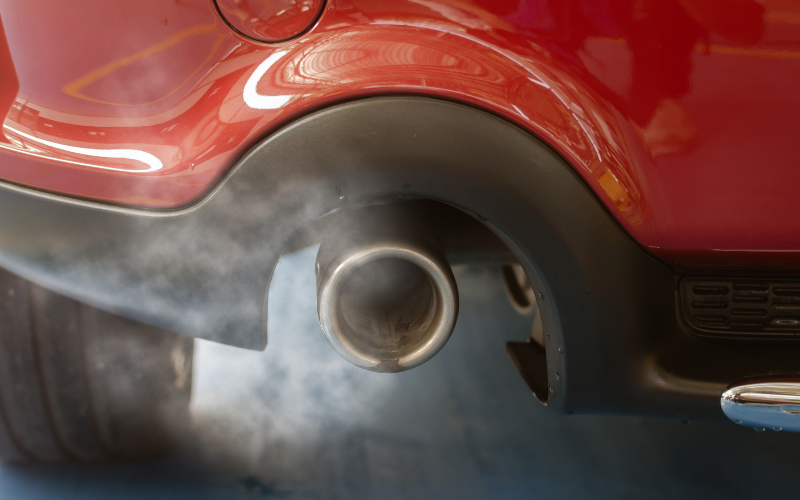Comparing Traditionally Fuelled Cars and Electric Vehicles

- Vehicles with an internal combustion engine (ICE) use fuel, usually petrol or diesel, as a power source.
- Electric vehicles (EVs) get their power from an electric motor and a rechargeable battery.
- We explore the biggest similarities and differences between ICE cars and EVs to help you decide which is the best option for you.
The automotive industry is undergoing a significant transformation. Internal combustion engine (ICE) vehicles have long been the most popular choice for consumers. However, electric vehicles are rapidly gaining popularity. This is as the world shifts to a more sustainable perspective.
Read on to learn more about the key similarities and differences between ICE cars and electric vehicles.
ICE Cars and Electric Vehicles: Similarities
1. Design and comfort
Modern ICE vehicles and EVs offer similar levels of comfort, safety, and convenience. Advanced technology and connectivity systems, as well as high-quality interiors, are common in both.
2. Vehicle choice
Both ICE cars and EVs are available in various shapes, sizes, and styles. Whether looking for a petrol, diesel, or electric model, you can choose from a wide range of options to suit your preferences and needs. From hatchbacks and SUVs to saloons and estates, there is plenty of choice from world-leading manufacturers.
3. Technological advancements
Both types of vehicle benefit from continued technological advancements. Innovations in design, materials, and equipment are improving cars all the time.
Differences
1. Power source
ICE vehicles rely on diesel or petrol as a fuel source to power an internal combustion engine. This engine burns the fuel to create energy, which drives the vehicle. EVs use electricity stored in batteries to power an electric motor. The motor converts electrical energy into mechanical energy, propelling the vehicle.
2. Fuelling and charging
Refuelling an ICE vehicle typically takes a few minutes at a fuel station, providing convenience and long driving ranges. EVs must be charged by an external power source. This can take anywhere from 30 minutes at a rapid charge point, to several hours using a standard outlet (depending on the model). The availability of charging infrastructure is expanding - both publicly and privately. However, charging an EV still requires more planning than refuelling an ICE vehicle.
3. Environmental impact
ICE vehicles emit carbon dioxide (CO2) and other pollutants as byproducts of fuel combustion. This contributes to air pollution and global warming.
EVs produce zero tailpipe emissions and contribute to less air pollution. While many EV charging providers are switching to renewable energy sources, some still use fossil fuels. Electric cars are only as clean as their power source, so it's important for the grid to focus on renewable energy.
Additionally, the manufacturing process for lithium-ion batteries for EVs requires mining. This can be a pollution-intensive activity.
However, overall EVs emit fewer greenhouse gases and pollutants over their lifetime than diesel or petrol cars. This is even when considering the energy used to manufacture and power them.

4. Maintenance
ICE cars have complex mechanics with numerous moving parts. Therefore, they require regular maintenance of components. EVs have fewer moving parts due to their lack of combustion engine leading to fewer long-term maintenance costs. However, EV servicing is still important to ensure the safety and reliability of critical components.
5. Performance
ICE vehicles typically offer robust and dependable performance. This makes them reliable for long-distance travel. They provide a more 'traditional' driving experience which many people are accustomed to. EVs provide instant torque and smooth, rapid acceleration. They offer a quieter and more refined driving experience.
6. Cost
New EVs are generally more expensive to buy upfront than new petrol or diesel vehicles. This is due to the complex technology and engineering associated with electric cars. However, EVs are generally cheaper to run than ICE vehicles. Charging an EV at home is usually cheaper than filling up a petrol or diesel tank. Plus, electric vehicles don’t pay road tax and are exempt from charges in Low and Zero Emission Zones.
Find your next car at Macklin Motors
When deciding which type of vehicle is best for you, you'll need to consider factors such as cost, efficiency, and environmental impact.
Visit your local dealership to browse our range of new and used cars and take a test drive in any models that interest you. Our friendly, expert team will be delighted to offer advice and answer any queries you may have.
Still have questions about transitioning to an electric or hybrid vehicle? Check out our EV Hub for all you need to know.